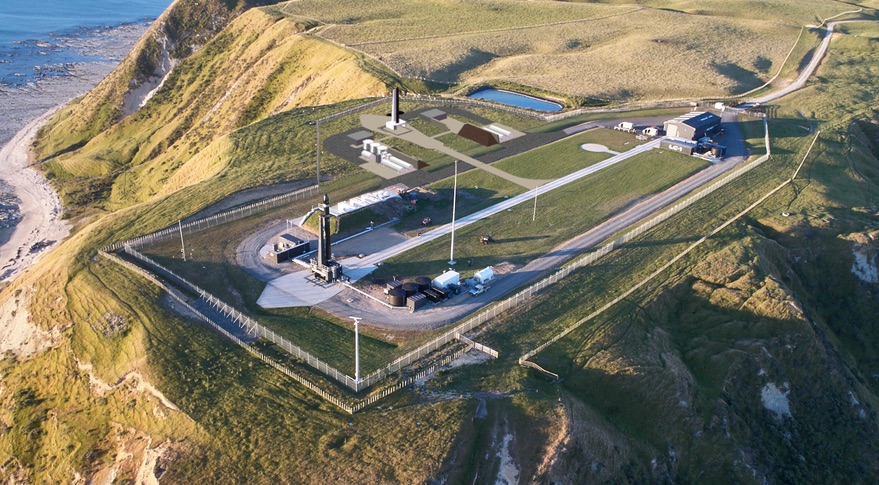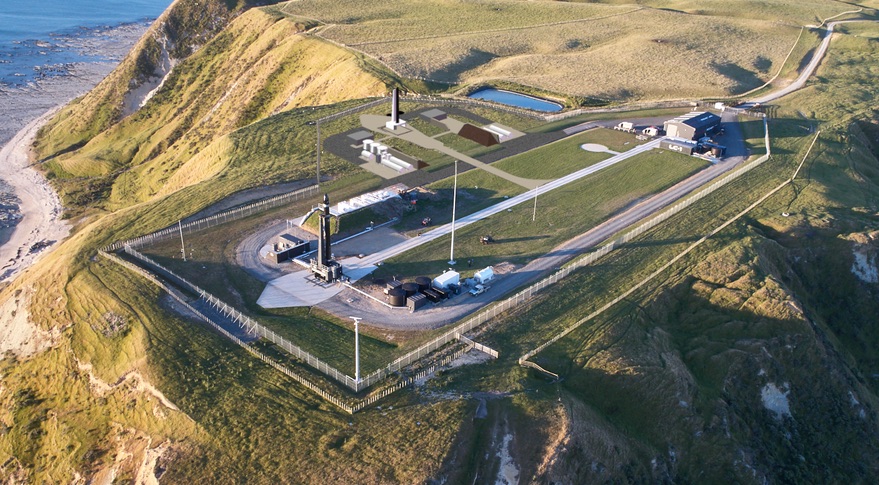
Rocket Lab’s Newest Launch Pad Helping Prepare For The Future
A launch pad is a complex yet vital piece of infrastructure necessary for any rocket launch. These pads are responsible for a long list of tasks including raising, securing, and fueling the rocket, just to name a few. Rocket Lab has multiple launch complexes located in different parts of the world. Just recently they completed an addition meant to increase launch capability and more.
Yesterday on February the 23rd, Rocket Lab announced that Pad B at Launch Complex 1 in New Zealand is up and running. After being under construction for some time, the new pad is complete and ready for future launches. This addition is meant to increase Rocket Lab’s launch capabilities and offer the site to multiple missions and different customers at the same time.
Rocket Lab knows the importance of a launch pad and what benefits it can offer. In addition, the company utilized a large list of infrastructure that is already in place. This helped them lower costs and open up more launch opportunities. As Electron continues to launch and Rocket Lab gets bigger, the extra space is necessary for the company to continue to grow and succeed. Here I will go more in-depth into the new pad and Rocket Lab’s launch capabilities.
New Pad B Addition

Yesterday Rocket Lab announced that Pad B was now up and running at Launch Complex 1. This adds to the current Pad A which has been responsible for the majority of Rocket Lab’s launches including over 100 satellites successfully sent into orbit. Rocket Lab has been working on this pad addition for quite some time now. While it shares some similarities to Pad A, Rocket Lab highlighted some of the changes and improvements along with the reasoning behind the new pad. The first has to do with launch capacity. CEO of Rocket Lab, Peter Beck explained, “What we are doing here with Pad B is essentially doubling our launch capability. The ability to launch in our launch cadence is essentially doubled by having an additional pad.” A single pad at Launch Complex 1 is capable of only a certain pre-determined amount of launches. The addition of a second pad significantly increases Rocket Lab’s capability meaning they can launch more frequently. The next major benefit has to do with convenience. Rocket Lab has a large group of customers including government and commercial. Now, these customers not only have the choice of which launch complex location but even specific launch pads thanks to the newest addition. Specifically, Peter Beck mentioned that, “Right now we got one customer ready to go on this pad behind me, (referring to Pad B), and another customer that’s processing and getting ready to go on that pad (referring to pad A).” This is especially helpful for customers who have very specific time constraints that can be facilitated thanks to the additional pad.
As I mentioned prior, while Pad B is very similar to Pad A, Rocket Lab made some improvements based on what they learned from the initial pad. For one, this pad uses the same integration facility, a rocket runway, with all the final infrastructure placed within a concrete pad no bigger than a tennis court. Rocket Lab highlights that when attempting to build a Pad B, they were intending to create a next-generation launch pad. Here they created a streamlined flow where customers’ payloads can be processed and get to orbit as quickly and easily as possible. Pad B eliminates pad recycle time meaning Rocket Lab can continue to launch. It’s likely now that when a customer needs to launch, Rocket Lab has an available pad where Electron can launch. With this new launch pad, Rocket Lab worked to make a simple yet invaluable addition to the company and specifically Launch Complex 1. Meant to facilitate the growing company and increased launch demand.
Launch Complex 1

Now that we know a bit more about the specific Pad B addition, we can look at the launch complex where its located and how each piece of infrastructure works together. Rocket Lab operates two launch sites comprising a total of three pads for the Electron launch vehicle. Between the two sites, located in Māhia, New Zealand, and Virginia, Rocket Lab offers more than 130 launch opportunities every year. This means their customers enjoy unmatched flexibility for their launch location and schedule. In terms of the most recent Pad B addition, I am talking about Launch Complex 1, located in Mahia, New Zealand. Rocket Lab operates the world’s only private orbital launch range, Launch Complex 1. The Māhia Peninsula-based complex is licensed by the FAA and can support up to 120 launches per year. Rocket Lab operates two pads at Launch Complex 1; Pad A and Pad B. The operation of two launch pads within the launch complex eliminates the time currently required between launches for a full pad recycle.
This enables truly responsive launch opportunities, providing Rocket Lab with the ability to launch back-to-back within hours, rather than days, weeks, or months. The launch site also includes a Command and Control Facility located 2.5 km from the launch pad. This location houses workstations for flight safety, payloads, launch vehicle teams, and the launch director. This is also the location of the tracking antennas on the day of launch, supported by a downrange facility on the Chatham Islands. In the most recent update, Peter Beck highlighted how Launch Complex 1 is much more than just a few pads. Specifically, he said, “Out at LC-1 you see multiple cleanrooms that enable us to process multiple customers at once. Up at the top of the road there we have range control where we are in charge of the entire range, we don’t rely on any government range, any government assets, its all owned and controlled by Rocket Lab.” All of these different aspects of the launch complex mean Rocket Lab has full control and opportunity for different missions and much more. This in return helps them launch consistently and quickly. Now with the completion of Pad B, Rocket Lab owns and operates three different launch pads located around the world. We have seen the company grow at a very fast rate thanks to their hard work and ambitious ideas. With the future demand for small-lift launch vehicles and launches expected to be massive, a pad addition like the one just made is very important for the future of the company. Pad B will have a big impact on future launch operations and more for Rocket Lab and Electron.
Conclusion
Rocket Lab has been growing at a very impressive rate. We have seen consistent successful Electron launches along with new ambitious plans and goals for the future. Just recently the company announced the completion of Pad B, at Launch Complex 1. Launch pads are a complex and vital piece of infrastructure that helps provide rockets with stability, fuel, and raise them into position, just to name a few. The newest pad is expected to increase Rocket Lab’s launch capability among other things. We will have to wait and see how Rocket Lab’s launch frequency changes and the impact it has on the space industry.
